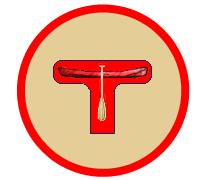Treating Water
So what's in water that's so bad?
There are three broad categories of potentially harmful pathogens (anything that causes disease or illness) living in water:
- Protozoa (1-5 microns*) ex.Giardia lamblia
- Bacteria (0.2 to 0.5 microns) ex. Campylobacter, Cholera, Cryptosporidium, E. coli, Salmonella
- Viruses (0.004) ex. Hepatitis A, Norwalk, rotavirus
Sometimes you might be concerned about tastes, odours, pesticides, and trihalomethanes (THMs).
* 1000 microns = 1 mm
A water molecule is approximately 0.0001 micron wide.
To visualize the relative size difference consider this: If the tip of a regular no. 2 pencil is the size of a virus, then a bateria would be the size of a golf ball (~ 42x larger). If a water molecule were the size of a golf ball, then a bacteria would be the size of a 100 yard football field.
So how can we protect ourselves?
Backcountry camping generally requires that you source your drinking water from natural sources: a stream, river, pond, or lake. Even the cleanest looking water should be assumed to be contaminated and precautions taken to filter and/or purify it before drinking.
Filtering refers to methods of removing unwanted contaminants by forcing the water through a membrane or material of some sort. Water molecules are able to get through but larger particles such as bacteria and protozoa cannot. Due to the small size of viruses,
filtering alone does not remove viruses.
- Membrane Filters
- Depth Filters
Purifying water refers to methods of ensuring that all contaminants (viruses, bacteria, and protozoa) are either killed or rendered harmless.
- Boiling
- Chemicals - Iodine, Chlorine (Sodium Hypochlorite, Chlorine Dioxide)
- Distillation
- Ultraviolet (UV) Light
How long do I have to boil water for?
One of the best methods of purifying water is to boil the water. A common debate among backcountry campers is how long water should be boiled for it to be safe to drink. Because almost all pathogens will be killed in water temperatures above 70°C (160 °F), by the time water reaches the boiling point (100 °C), most pathogens will already be dead. The virus hepatitis A is one of the most heat resistant pathogens and does require at least one minute at a temperature of 98 °C or higher.
My personal general rule of thumb is to wait until the water reaches a good rolling boil. At this point I'm comfortable in the assumption that all the pathogens are killed. If you have some lingering doubt, let the water boil for a couple of more minutes, it certainly won't hurt.
Water Filtering Products (prices in CDN$ as of Apr 2015)
Sawyer Squeeze
$45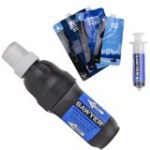
0.1 microns
< 0.01 ¢ / litre
Cost: $45
Technology: Hollow Fibre
Litres Treated: 3,780,000
Pore Size: 0.1 microns
Cost per Litre: < 0.01 ¢
- Lifetime guarantee
- Technology used in medical dialysis
Information... Sawyer Mini
$25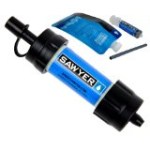
0.1 microns
0.01 ¢
/ litre
Cost: $25
Technology: Hollow Fibre
Litres Treated: 378,000
Pore Size: 0.1 microns
Cost per Litre: 0.01 ¢
Information... Kataydn Combi
$198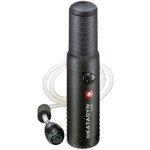
0.2 micron
0.4 ¢ / litre
Cost: $198
Technology: Ceramic
Litres Treated: 50,000
Pore Size: 0.2 micron
Cost per Litre: 0.4 ¢
- Replacement cartridge $109
Information... Kataydn Pocket
$340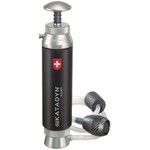
0.2 micron
0.68 ¢ / litre
Cost: $340
Technology: Ceramic
Litres Treated: 50,000
Pore Size: 0.2 micron
Cost per Litre: 0.68 ¢
- Rugged, metal construction
- Replacement cartridge $195
- Requires considerable physical effort that can be tiring for some
Information... MSR Miniworks EX
$85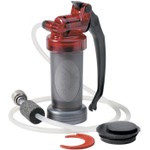
0.2 microns
4.25 ¢ / litre
Cost: $85
Technology: Carbon-Cored Ceramic
Litres Treated: 2000
Pore Size: 0.2 microns
Cost per Litre: 4.25 ¢
- Replacement cartridge available for $37
Information... Platypus GravityWorks
$105 (2 litre)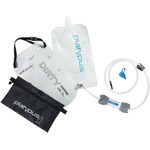
0.2 microns
7 ¢ / litre
Cost: $105 (2 litre)
Technology: Hollow Fibre
Litres Treated: 1500
Pore Size: 0.2 microns
Cost per Litre: 7 ¢
- Replacement cartridge is $51
Information... Platypus GravityWorks
$114 (4 litre)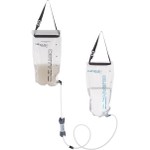
0.2 microns
7.6 ¢ / litre
Cost: $114 (4 litre)
Technology: Hollow Fibre
Litres Treated: 1500
Pore Size: 0.2 microns
Cost per Litre: 7.6 ¢
- Replacement cartridge is $51
- Filters 4L in less than 3 minutes (depending on water quality)
Information... MSR AutoFlowGravity
$114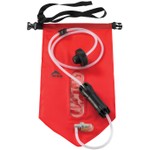
0.2 micron
9.5 ¢ / litre
Cost: $114
Technology: Hollow Fibre
Litres Treated: 1200
Pore Size: 0.2 micron
Cost per Litre: 9.5 ¢
- Replacement cartridge is $51
Information... MSR MicroFilter
$85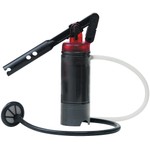
0.2 micron
11.23 ¢ / litre
Cost: $85
Technology: Fibreglass
Litres Treated: 757
Pore Size: 0.2 micron
Cost per Litre: 11.23 ¢
- Previously know as Sweetwater
- Small plastic parts can easily break
Information... Katadyn Hiker Pro
$90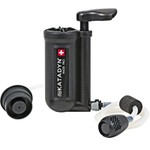
0.3 micron
11.89 ¢ / litre
Cost: $90
Technology: Glass Fibre
Litres Treated: 757
Pore Size: 0.3 micron
Cost per Litre: 11.89 ¢
- Replacement cartridge is $44
Information...
Water Purification Products (prices in CDN$ as of Apr 2015)
SteriPEN Freedom
$103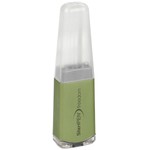
2.58 ¢ / litre
Cost: $103
Technology: Ultraviolet Light
Litres Treated: 4000
Cost per Litre: 2.58 ¢
- 50 litres per two CR123 batteries
- Only treats 500 ml a a time, must do two treatments for a 1L Nalgene
Information... Aquatabs Tablets
$10 (50 tablets)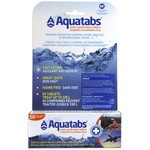
20 ¢
/ litre
Cost: $10 (50 tablets)
Technology: Sodium Dichloroisocyanurate
Litres Treated: 50
Cost per Litre: 20 ¢
Information... Pristine Personal
$20 (30 ml)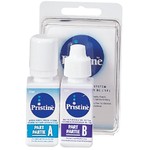
16.67 ¢
/ litre
Cost: $20 (30 ml)
Technology: Chlorine Dioxide
Litres Treated: 120
Cost per Litre: 16.67 ¢
Information... Pristine Camp/Cottage
$23 (60 ml)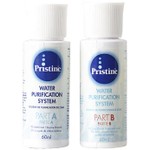
9.58 ¢
/ litre
Cost: $23 (60 ml)
Technology: Chlorine Dioxide
Litres Treated: 240
Cost per Litre: 9.58 ¢
Information... Katadyn MicroPur
$18 (30 tablets)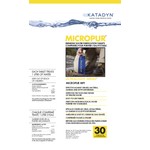
60 ¢
/ litre
Cost: $18 (30 tablets)
Technology: 6.4% Sodium Chloride (salt) + 1% Sodium Dichloroisocyanurate Dihydrate
Litres Treated: 30
Cost per Litre: 60 ¢
Information... Coghlans Germicidal
$12 (25 tablets)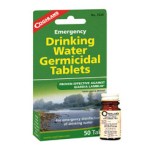
48 ¢
/ litre
Cost: $12 (25 tablets)
Technology: Iodine
Litres Treated: 25
Cost per Litre: 48 ¢
Information... Household Bleach
$0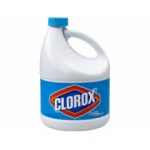
0 ¢ / litre
Cost: $0
Technology: 5-6% Sodium Hypochlorite
Litres Treated: 2 drops per 1 litre
Cost per Litre: 0 ¢
Information...
When treating water with chlorine or iodine based chemicals, consider the following:
- Some folks are allergic to iodine - they should not use iodine based chemicals to treat their water.
- If you can't find a clean source of water that is free from visible particulates, let the water stand in a container for a number of hours to allow particulates to settle to the bottom and/or pre-filter the water using a coffee filter or cheese cloth, prior to treating.
- Chlorine has a low to moderate effectiveness in killing Giardia, and a high effectiveness in killing bacteria and viruses.
- Iodine based products (including tetraglycine hydroperiodide) are not effective against Cryptosporidium but have been shown to be more effective than chlorine-based treatments in inactivating Giardia cysts.
Make your own chemical treatment for free (almost)!
Using a household product you likely already have at home or in your first-aid kit can provide you with a great primary or backup water treatment. For a convenient sized container, use a small 5 mL Nalgene or, even better, use a bottle from a previously used eye-treatment product such as Visine and you'll even have a built-in dropper. Caution! Remove the original label and re-label before using a product previously used for eye treatment!
Chlorine
A small amount of unscented household bleach (5-6% Sodium Hypochlorite) goes a long way. Use 2 drops per litre of water to be treated - more if the water is cloudy or coloured. Just 1 teaspoon contains approximately 76 drops and can treat up to 38 litres of water!
When possible, pre-filter the water to be treated. Add the required number of drops and then wait approximately 30 minutes. There should be just a hint of chlorine smell. If not, repeat the dosage and let stand an additional 15-30 minutes.
Iodine
Alternatively, if your first-aid kit contains a iodine-based tincture, you can use that to treat your water in a pinch. Add 5-10 drops (depending on initial clarity of water) of iodine solution (2% iodine/47% alcohol) for every litre of water. Let stand for at least 30 minutes.
Considerations
Always have a backup treatment plan!
In the back-country, batteries can fail, filtering elements can break, levers and pumps can fail, and tablets can be ruined or lost. Always be prepared by having a backup treatment plan.
- Choose water from a moving stream where possible.
- The smallest bacteria are 0.2 microns in size so choose a filter that is 0.2 microns or smaller.
- When choosing a product, watch for the terms absolute and nominal. Absolute refers to a filter that catches virtually all the particles of the specified size or larger, while nominal means that a good portion of the particles of the specified size will be caught.
- If using a UV light based product always carry extra batteries with you.
- Always have a backup treatment plan. Don't forget about boiling water - it is an effective primary or backup plan for any back-country camper.
- The only method that can make sea (salt) water drinkable is distillation.
- Consider the time required. Some methods provide safe water instantly while other methods may need as long as 4 hours.
- Consider your expected water source - a clear river or lake versus an opaque "dirty" water source. Treating dirty water will reduce the rated litres treated, reduce the effectiveness of UV and chemical treatments, and make pump action filters physically more tiring to use.
- Is the water you are filtering for personal or group use?
- Water sources in warmer tropical and sub-tropical climates may contain viruses and must be treated accordingly. A system that combines filtering AND chemical treatment is recommended.
- In Canada, viruses are generally not a concern in lake and river water sources and filtering alone is usually considered sufficient to treat water for drinking.
- Dependability and Serviceability: A filter may meet your needs in terms of specifications but if it breaks in the field it won't do you much good. A low cost may be attractive but keep in mind that these units are often made from fragile plastic parts and contain unserviceable O-rings and other parts. When your water filter is a critical survival tool on longer, more remote trips, consider spending more for metal construction and serviceability.
Conclusions
- In Canada and much of the United States viruses in lakes and rivers is generally not thought to be a concern (although there is mounting evidence to suggest differently) so focus on getting a filter that is rated at 0.1 or 0.2 microns. An adequately rated filter will not only filter out dangerous bacteria and protozoa but also make the water more visually appealing by filtering out sediment and other small particulates. If viruses are a concern due to your location, or just peace-of-mind, then add a UV or chemical purifier to your kit and use both - filter first, apply a chemical or UV light treatment second.
| Personal Use | Group Use | Heavy/Expedition Use |
Sawyer Squeeze or Mini
It is hard to beat the price and performance.
The one common complaint about the reservoir being difficult to fill is easily overcome by filling it from a pot or other container.
|
Platypus GravityWorks Filter System
The price per litre is higher than other choices but is reduced over time with the purchase and use of replacement cartridges.
|
Katadyn Pocket
It's initial price is the highest of the ones mentioned on this page, but its rugged, all metal construction, field serviceability and long life ceramic cartridge may be worth the extra price.
|
- Always have a backup plan! Plan on boiling water if your filter breaks or fails in some other way. A small water-tight container with some household bleach is an almost zero-cost and ultra-light backup plan. Or, slightly more convenient, is carrying some Aquatabs as part of your emergency or first-aid kit.
